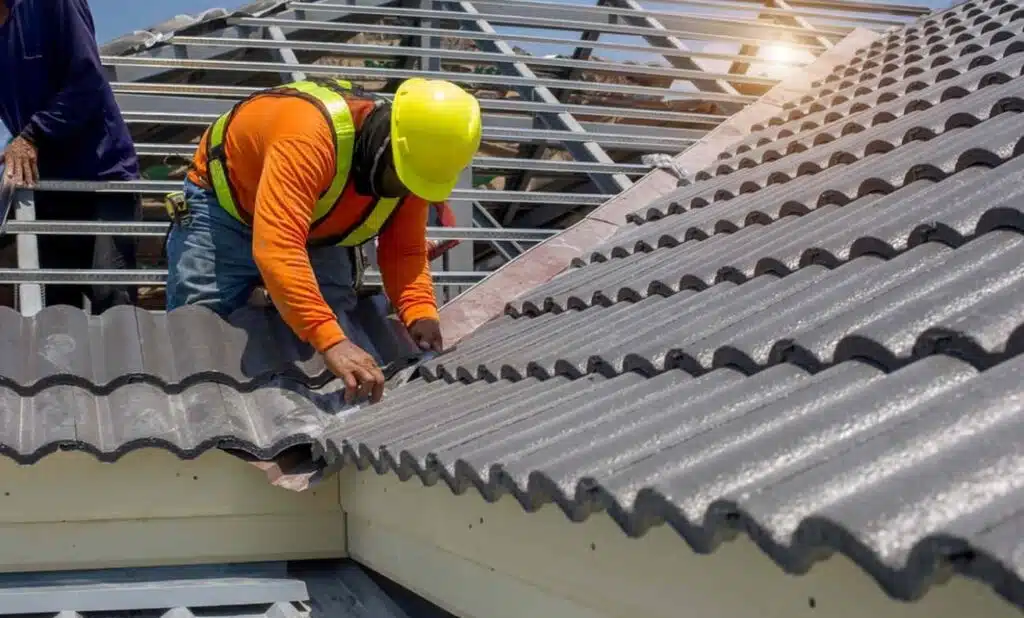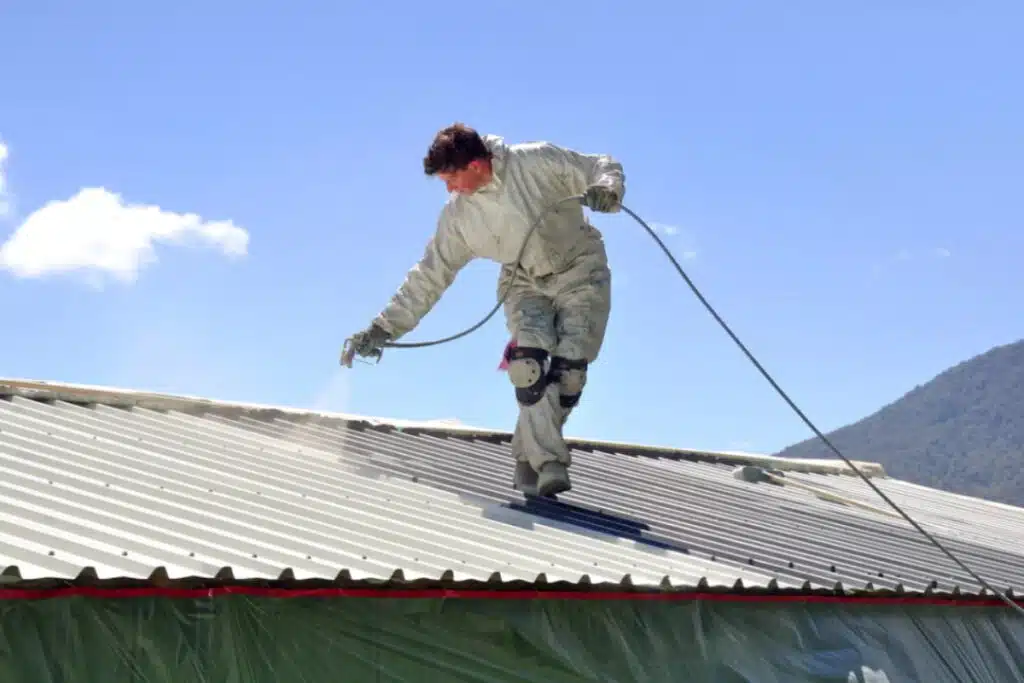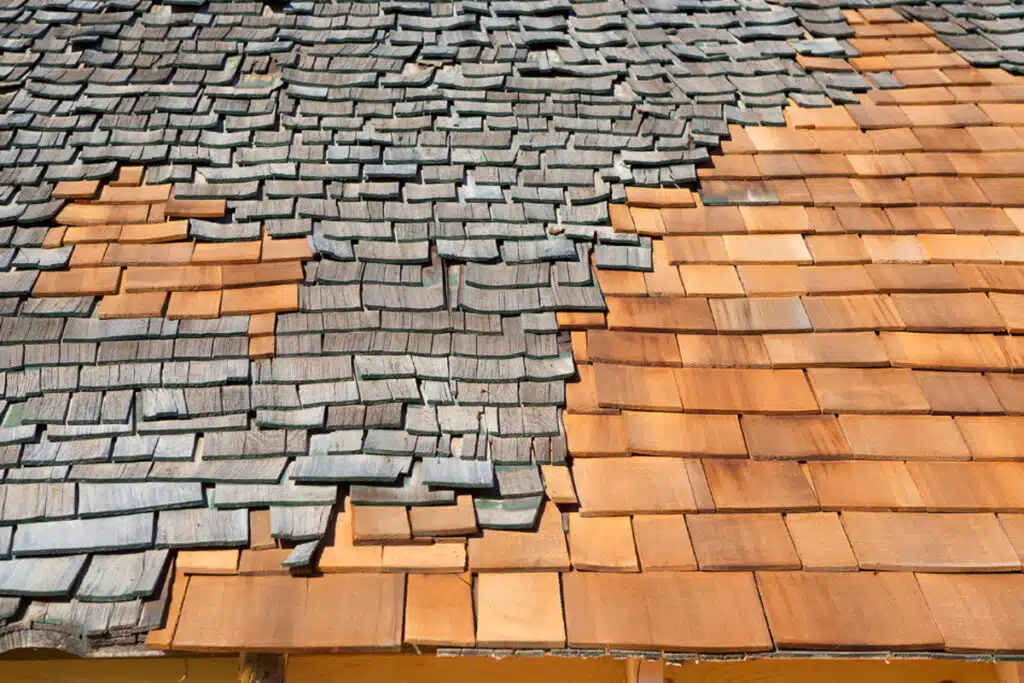Florida’s unique climate can pose significant challenges for flat roofs on homes. The heavy rain, high humidity, and strong winds mean your flat roof requires special attention to stay in good shape. Flat roofs, unlike sloped ones, can be more prone to issues like water pooling, leaks, and drainage problems, which can lead to severe damage if not addressed promptly.
Understanding common flat roof problems and how to troubleshoot them is essential for Florida homeowners. It’s crucial to recognize early signs of damage to prevent small issues from becoming costly repairs. Regular inspections and maintenance can go a long way in keeping your flat roof in top condition.
Taking a proactive approach to roof care helps protect your home from the elements. By learning about potential problems such as water leaks, roof membrane damage, and drainage issues, you can take steps to fix them before they escalate. Preventative maintenance is key to extending the life of your flat roof and ensuring it provides the protection your home needs. We’ll cover identifying leaks and pooling, addressing membrane damage, fixing drainage issues, and essential maintenance tips in this guide.
Identifying Water Leaks and Pooling
Water leaks and pooling are common issues with flat roofs. Identifying them early can prevent serious damage to your home. Knowing what to look for and where to check can help you act quickly.
1. Inspect Ceilings and Walls: Look for water stains on your ceilings and walls inside the house. Discoloration often indicates a leak. Pay special attention to corners and areas near walls, as leaks can travel from the original source.
2. Check for Pooling Water: After it rains, go up to the roof to check for standing water. Pooling is a sign that your drainage system may not be working properly. Water that doesn’t drain within 48 hours can weaken your roof and lead to leaks.
3. Look for Mold or Mildew: If you notice mold or mildew indoors, particularly in the attic or top-floor rooms, it might be due to a roof leak. Mold thrives in damp conditions and can spread quickly, causing health issues and further damage to your home.
4. Monitor Roof Penetrations: Areas around vents, chimneys, and skylights are prone to leaks. Check these spots regularly for any signs of water entry. Cracked or deteriorating seals around penetrations often cause leaks.
Addressing leaks and pooling promptly can help maintain the integrity of your flat roof. Fixing these issues early reduces the risk of extensive damage and costly repairs.
Addressing Roof Membrane Damage
The roof membrane is a crucial part of a flat roof’s structure. It acts as a waterproof barrier, protecting your home from the elements. Identifying and addressing membrane damage is essential to keep your roof in good condition.
1. Inspect for Tears and Punctures: Regularly inspect your roof membrane for visible tears or punctures. These can result from heavy foot traffic, falling debris, or harsh weather. Even small holes can let water in, leading to leaks.
2. Check for Blisters or Bubbles: Blisters or bubbles on the membrane indicate trapped moisture or air. These areas are weak spots that can burst and create openings for water. Carefully check for these signs, especially after a storm.
3. Look for Membrane Separation: Over time, the membrane can separate from the roof surface, especially around edges and seams. This separation can allow water to penetrate. Inspect these areas regularly to ensure the membrane is intact.
4. Assess for UV Damage: Florida’s strong sun can cause the membrane to become brittle and crack over time. Look for signs of UV damage such as discoloration or brittleness. Using a protective coating can extend the membrane’s life.
Repairing membrane damage as soon as it’s identified is crucial. Patching small holes, resealing seams, and applying protective coatings can prevent leaks and prolong the life of your roof. If you find significant damage, it’s best to consult a professional to assess and repair properly.
Fixing Poor Drainage Issues
Poor drainage is a common problem with flat roofs. If not addressed, it can lead to significant water damage. Here are some steps to fix poor drainage issues.
1. Clear Debris Regularly: Leaves, branches, and other debris can block drains and gutters. Regularly clean these areas to ensure water can flow freely off the roof. Consider installing gutter guards to minimize debris buildup.
2. Check Drainage Systems: Ensure all drainage systems, including internal drains and scuppers, are functioning properly. Test them by pouring water to see if it’s draining quickly. A slow drain might indicate a blockage.
3. Adjust the Slope: Flat roofs should have a slight slope to help water flow towards the drains. If you notice water pooling, you might need to adjust the slope. Adding tapered insulation can help correct this issue.
4. Install Additional Drains: If water pooling is still a problem, consider installing additional drains. More drains can help spread the water flow, preventing it from pooling in problematic areas.
5. Repair Low Spots: Sometimes, low spots can form on the roof, causing water to pool. Leveling these areas by adding material can help improve drainage. Ensure the added material matches the existing roof to maintain a proper seal.
Taking these steps can improve your roof’s drainage, helping prevent water damage and ensuring your roof lasts longer.
Preventative Maintenance for Flat Roofs
Regular maintenance is crucial to the longevity of flat roofs. By following a few simple steps, you can catch problems early and prolong the life of your roof.
1. Schedule Regular Inspections: Have your roof inspected at least twice a year, preferably in the spring and fall. Professional inspections can identify issues you might miss, such as small leaks or deteriorating materials.
2. Trim Overhanging Branches: Trees around your home can drop leaves and branches onto your roof, leading to debris buildup. Trim any overhanging branches to minimize the risk of damage and keep your roof clear.
3. Check and Repair Seals: The seals around vents, skylights, and other roof penetrations can deteriorate over time. Inspect these areas regularly and reseal as needed to prevent leaks.
4. Protect Against UV Damage: The sun can cause roofing materials to become brittle and crack. Apply a reflective coating to protect against UV damage. This can also help keep your home cooler.
5. Regularly Remove Debris: Make it a habit to remove debris from your roof. Even small amounts can block drainage systems and cause water to pool. Keeping your roof clear can prevent these problems.
By following these maintenance tips, you can help ensure your flat roof stays in good condition and avoid costly repairs down the line.
Conclusion
Taking care of your flat roof is essential for protecting your home. Identifying water leaks and pooling, addressing membrane damage, fixing drainage issues, and performing regular maintenance can all help extend the life of your roof. Simple actions like cleaning debris, checking for damage, and regular inspections can prevent minor problems from becoming major headaches.
Regular maintenance will not only keep your roof in top shape but also save you money over time. Small investments in upkeep can prevent larger, costlier issues. Your roof is a crucial part of your home, and taking care of it will ensure it continues to protect you and your family.
Don’t wait for problems to arise. Rhino Roofing is here to assist if you need help with your flat roof. Our team is ready to provide inspections, repairs, and service, including flat roof maintenance. Contact Rhino Roofing today to keep your roof in excellent condition and enjoy peace of mind knowing your home is protected.




